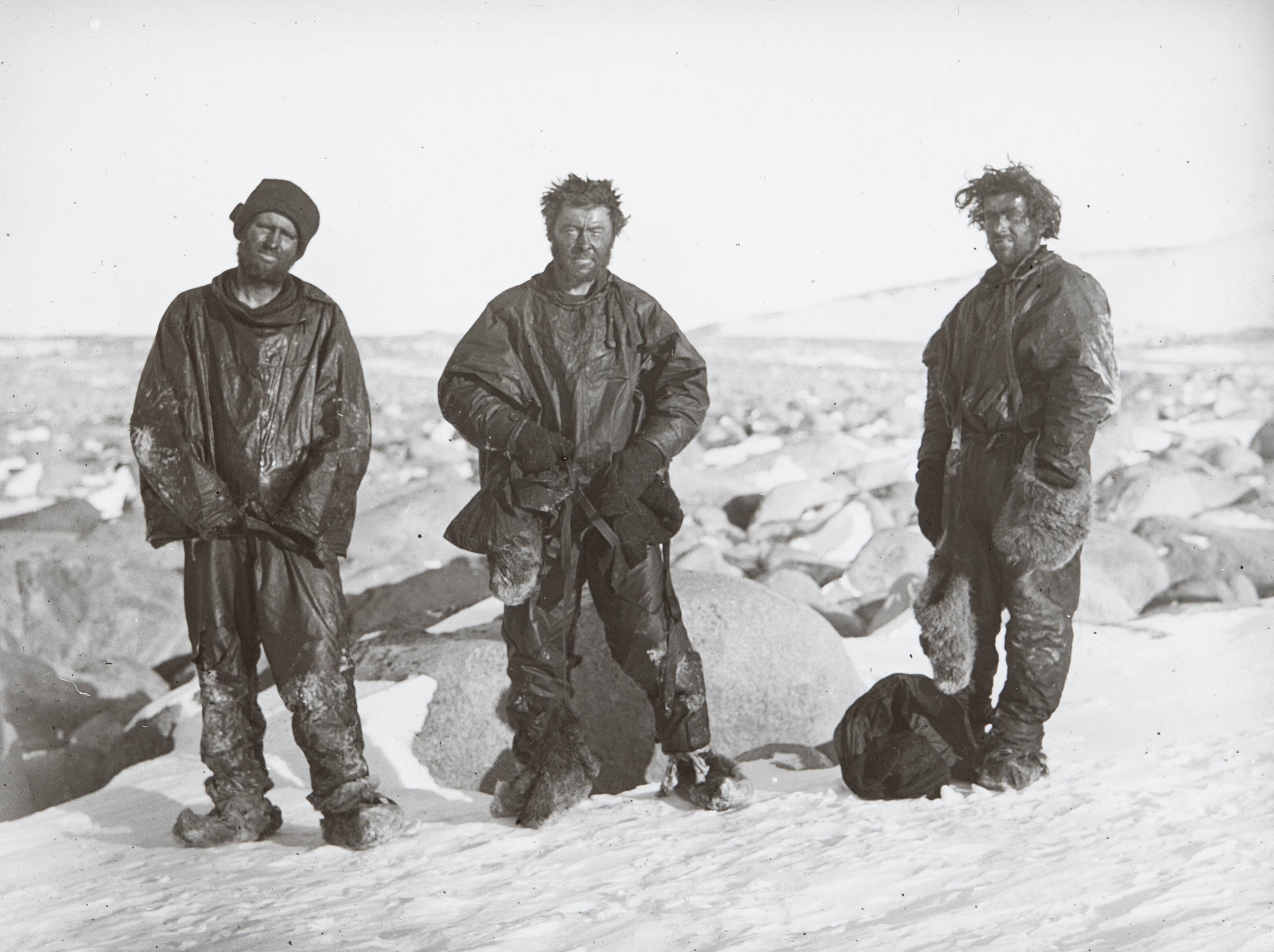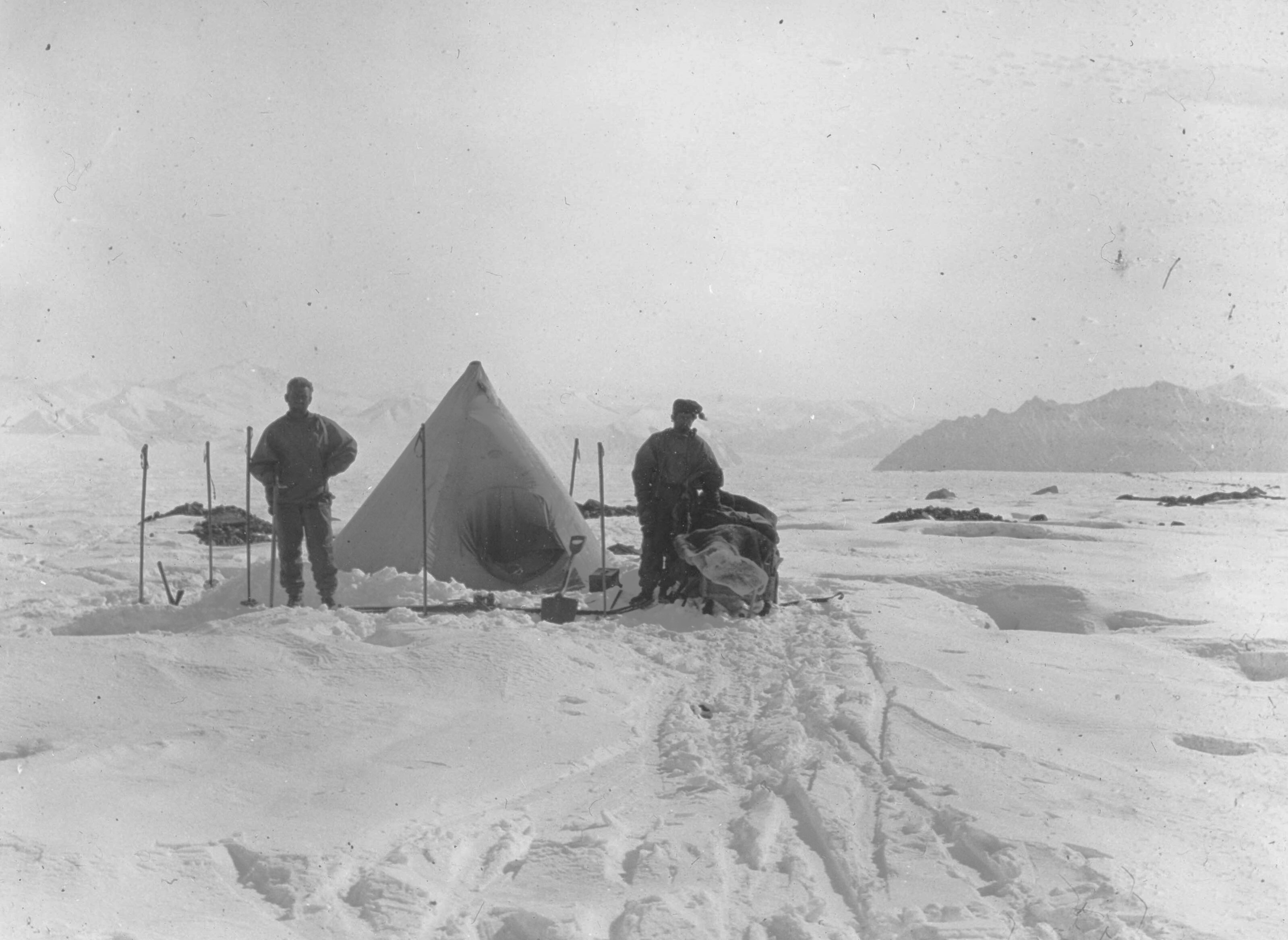Join us on our journey of redevelopment with stories of exploration, adversity and art in surprising places.
When zoologist and surgeon George Murray Levick was stranded for about 8 months on a frozen Antarctic island in the perpetual dark of winter, instinctively he turned his mind to writing a novel. It was an adventure story set in the warmth of the Mediterranean.

Levick was second in command of the Northern Party during Captain Robert Falcon Scott’s Terra Nova Expedition (1910–1913). The team of six men were stranded on Inexpressible Island during an exploration landing when their ship couldn’t collect them due to heavy sea ice and poor weather. Levick called the island a “godforsaken spot” in his handwritten account of the ordeal, which is preserved in the Canterbury Museum collection. Their ordeal is known as one of the most remarkable feats of survival. One key to their survival lay in a cache of four books, including David Copperfield by Charles Dickens.
Realising that the ship would not be coming back for them, Levick and his five teammates began carving an ice cave into a snowdrift and rationed their meagre supplies of biscuits, sugar and chocolate. While one half of the team worked on digging out the shelter, the others killed seals and penguins to supplement their supplies.
Before the ice cave was finished, they hid from blizzards and freezing winds by huddling in their reindeer fur sleeping bags in a tent frosted on the inside with ice crystals. During one of the worst storms, they spent 13 days trapped inside the tent. One night, hurricane-force winds snapped a tent pole, pinning them down under the flapping canvas. It was “a helpless suffocating sensation that took a very strong effort to suppress”, Levick wrote. This forced them to retreat to the nearly complete ice shelter, where they barricaded the entrance with tent canvas. Levick’s diagram of the shelter shows a small room with a fireplace where the six shipmates slept toe to toe. Seal blubber provided fuel for candles and cooking. The soot blackened everything in the shelter.

Trapped in such hostile conditions, with months of winter darkness ahead of him, Levick looked for a creative escape. He sketched an outline for an adventure novel. The story he drafted takes place near Izmir on the Aegean coast of Turkey, known for its clear and warm aquamarine waters, stunning beaches and sunny weather, and followed the adventures of a sub lieutenant in the Royal Navy. For Levick, the arts were a creative escape from his dire situation. And to survive an Antarctic winter, where better to flee in your imagination than the warmth of the Mediterranean? His three-page manuscript, which the Museum has recently acquired, is written in pencil on paper stained with sooty fingerprints. It is lasting evidence of the vital role the arts played in sustaining his spirits through the ordeal.
The six men endured months of darkness and perpetual freezing temperatures that never got above minus 20°C and were often far lower due to the chill from the hurricane force winds. Levick knew that keeping up morale was as important to their survival as having shelter, warmth, food and water. He recognised they needed food for the body and food for the mind. Levick noted, “The constant craving of hunger is very trying to the mind, leading to despondency.”

Levick, a robust explorer and keen rugby player, was affectionately nicknamed “‘mother” by his teammates because of his caring instincts. His skills as a doctor, a diplomat and a psychologist helped maintain the team’s mental resilience. The men kept their spirits up by reading books to each other. They had four titles: Simon the Jester by William John Locke, a biography of John Louis Stevenson, The Decameron by Giovanni Boccaccio and David Copperfield by Charles Dickens. Levick started with David Copperfield - reading one chapter aloud to the team each night.
Just as they rationed their food, they also stretched out their supply of emotional and intellectual sustenance. It kept them going as they looked forward to each instalment. Levick would read to his shipmates by the “dim and fitful” light of the blubber lamps. He wrote. “After the wretched day, the comfort of the evenings sustained by the hot food made us happy’’. This cosy happiness, kindled in the most extreme circumstances, indicates how literature helped foster a sense of togetherness and, equally important, how it was used to transport the mind.
The six managed to escape Inexpressible Island at the end of the winter. When the sea ice was still frozen they trekked over 400 km to the safety of the expedition hut at Cape Evans. Dickens helped them survive their Hard Times in a Bleak House. The endurance of the Northern Party remains one of Antarctica’s most astonishing survival stories. It was fueled by seal blubber and a good book.











